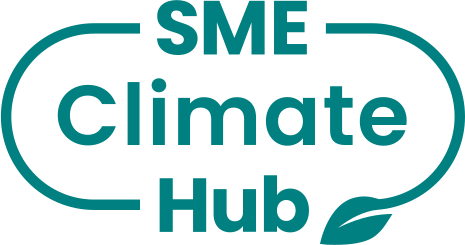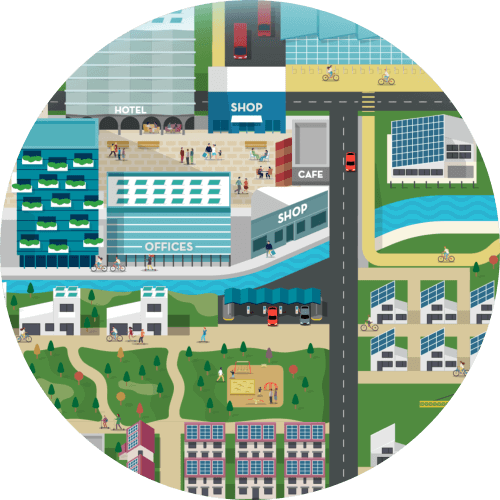See the steps your company can take towards a more sustainable future through our open resources.
Triple Bottom Line Accounting Ltd's Climate Report
Introduction *
Commitment And Targets *
Own emissions *
Value chain emissions *
(optional)Actions and plans to reduce emissions *
Climate Solutions *
(optional)Management and strategy *
(optional)Results, challenges and outlook *
Introduction *
reporting year
*2022
number of employees in the reporting year
*11.5
Commitment And Targets *
net zero target year
*2040
Base year
*2020
near-term scope 1 target
*-
target year
*2021
near-term scope 2 target
*-
target year
*2021
near-term scope 3 target
*90
target year
*2040
comment on your near-term targets
*Triple Bottom Line is already Net Zero in scopes 1 and 2. Until we find a calculator that can weight our suppliers we are unlikely to see any measured reduction in scope 3 supply chain emissions. We have changed suppliers and prioritise local and sustainable but the Normative Calculator does not take this into account. As such our carbon intensity for scope 3 has remained at 0.2 tonnes of CO2e per £ spent for 3 years in a row. It has reduced from 1.8 to 1.7 tonnes per employee since 2020.
Own emissions *
scope 1 emissions
scope 1 emissions (metric tons co2e)
*0.0
scope 2 emissions
scope 2 emissions (metric tons co2e)
*0.0
total energy consumption (kwh)
*1829
renewable energy
*100
purchased electricity
*0
Renewable electricity (%)
100
purchased steam
*N/A
Renewable electricity (%)
-
purchased heating
*N/A
Renewable electricity (%)
-
purchased cooling
*N/A
Renewable electricity (%)
-
Comment on your energy consumption
*Our workplace at The Enterprise Centre, University of East Anglia, is designed on Passivhaus principles, reducing energy requirements while maximising thermal comfort and air quality. Heating and power are supplied by a renewable electricity provider.
Value chain emissions (optional) *
scope 3 emissions
scope 3 emissions (metric tons co2e)
*19.3
supply chain related - upstream emissions
purchased goods and services
*17.4
metric tons CO2ecapital goods
*0.214
metric tons CO2efuel and energy related activities
*N/A
transportation and distribution (upstream)
*N/A
waste in operations
*N/A
business travel
*1.73
metric tons CO2eemployee commuting
*Not measured
leased assets (upstream)
*N/A
customer related - downstream emissions
transportation and distribution (downstream)
*N/A
processing of sold products
*N/A
use of sold products
*N/A
end-of-life treatment of products
*N/A
leased assets (downstream)
*N/A
franchises
*N/A
investments
*N/A
List any sources of emissions excluded:
*Commuting was measured in 2020 using a different calculator (normative does not measure commuting) it was 25% of our Scope 3 emissions. We work a hybrid model so it is likely to be similar. 2 employees use and EV, 2 drive to work in ICEVs, others take bus or walk or cycle. One works 100% at home
describe the calculation methodology and comment on accuracy:
*This is a very rough estimate based on two years ago.
Actions and plans to reduce emissions *
Scope 1 Actions
own facilities
N/A
-
own vehicles
N/A
-
own processes
N/A
-
scope 2 actions
purchased electricity
N/A
-
purchased steam
N/A
-
purchased heating
N/A
-
purchased cooling
N/A
-
scope 3 actions
supply chain related (upstream)
purchased good and services
*Yes
We have a sustainable purchasing policy and where there are no alternatives we lobby suppliers to improve their sustainability and net zero status.
capital goods
*Yes
We have a sustainable purchasing policy and where there are no alternatives we lobby suppliers to improve their sustainability and net zero status.
fuel and energy related activities
*Yes
We encourage employees to walk or cycle or take public transport - This includes a cycle to work scheme and for those who need to drive we offer a salary sacrifice scheme for an EV. We have no other fuel or energy related activities .
transportation and distribution (upstream)
*N/A
-
waste in operation
*Yes
TBLA is a Norfolk Zero Waste Champion. The Normative calculator does not ask for waste data. Most waste is collected for recycling by The Enterprise Centre, including food waste. TBLA has purchased mixed plastics waste bins for several years that collect all non-recyclable plastics including used Lateral Flow Testing Kits. This plastic is melted using onsite micro-generated energy from solar and food waste. It is repurposed into garden furniture and building boards.
business travel
*Yes
We encourage virtual meetings as the default but where travel is necessary we encourage public transport - mainly train travel.
employee commuting
*Yes
We encourage employees to walk or cycle or take public transport - This includes a cycle to work scheme and for those who need to drive we offer a salary sacrifice scheme for an EV.
upstream leased assets
*N/A
-
customer related (downstream)
i have asked my suppliers to halve emissions before 2030 and join the un-backed race to zero campaign
*Yes
percentage (%) of suppliers asked
*25
percentage (%) of suppliers committed
*-
i have communicated my commitment and actions to my business customers and asked them to join the un race to zero
*No
Climate Solutions (optional) *
What percentage of your total revenue comes from sales of climate solutions?
*2
Provide descriptions/names of your climate solutions:
*Carbon accounting Net zero planning Workshops Educational courses Writing of articles for publication
Methodology used to assess these as climate solutions:
*Income from these services in 2022 was 2% of total revenue.
How much of your research and development budget is allocated to climate solutions?
*10
are you investing in climate and/or nature outside your value chain?
*No
Management and strategy (optional) *
Results, challenges and outlook *

Triple Bottom Line Accounting Ltd's Climate Report
Triple Bottom Line Accounting Ltd's Climate Report - 2022
Introduction *
reporting year
*2022
number of employees in the reporting year
*11.5
Commitment And Targets *
net zero target year
*2040
Base year
*2020
near-term scope 1 target
*-
target year
*2021
near-term scope 2 target
*-
target year
*2021
near-term scope 3 target
*90
target year
*2040
comment on your near-term targets
*Triple Bottom Line is already Net Zero in scopes 1 and 2. Until we find a calculator that can weight our suppliers we are unlikely to see any measured reduction in scope 3 supply chain emissions. We have changed suppliers and prioritise local and sustainable but the Normative Calculator does not take this into account. As such our carbon intensity for scope 3 has remained at 0.2 tonnes of CO2e per £ spent for 3 years in a row. It has reduced from 1.8 to 1.7 tonnes per employee since 2020.
Own emissions *
scope 1 emissions
scope 1 emissions (metric tons co2e)
*0.0
scope 2 emissions
scope 2 emissions (metric tons co2e)
*0.0
total energy consumption (kwh)
*1829
renewable energy
*100
purchased electricity
*0
Renewable electricity (%)
100
purchased steam
*N/A
Renewable electricity (%)
-
purchased heating
*N/A
Renewable electricity (%)
-
purchased cooling
*N/A
Renewable electricity (%)
-
Comment on your energy consumption
*Our workplace at The Enterprise Centre, University of East Anglia, is designed on Passivhaus principles, reducing energy requirements while maximising thermal comfort and air quality. Heating and power are supplied by a renewable electricity provider.
Value chain emissions (optional) *
scope 3 emissions
scope 3 emissions (metric tons co2e)
*19.3
supply chain related - upstream emissions
purchased goods and services
*17.4
metric tons CO2ecapital goods
*0.214
metric tons CO2efuel and energy related activities
*N/A
transportation and distribution (upstream)
*N/A
waste in operations
*N/A
business travel
*1.73
metric tons CO2eemployee commuting
*Not measured
leased assets (upstream)
*N/A
customer related - downstream emissions
transportation and distribution (downstream)
*N/A
processing of sold products
*N/A
use of sold products
*N/A
end-of-life treatment of products
*N/A
leased assets (downstream)
*N/A
franchises
*N/A
investments
*N/A
List any sources of emissions excluded:
*Commuting was measured in 2020 using a different calculator (normative does not measure commuting) it was 25% of our Scope 3 emissions. We work a hybrid model so it is likely to be similar. 2 employees use and EV, 2 drive to work in ICEVs, others take bus or walk or cycle. One works 100% at home
describe the calculation methodology and comment on accuracy:
*This is a very rough estimate based on two years ago.
Actions and plans to reduce emissions *
Scope 1 Actions
own facilities
N/A
-
own vehicles
N/A
-
own processes
N/A
-
scope 2 actions
purchased electricity
N/A
-
purchased steam
N/A
-
purchased heating
N/A
-
purchased cooling
N/A
-
scope 3 actions
supply chain related (upstream)
purchased good and services
*Yes
We have a sustainable purchasing policy and where there are no alternatives we lobby suppliers to improve their sustainability and net zero status.
capital goods
*Yes
We have a sustainable purchasing policy and where there are no alternatives we lobby suppliers to improve their sustainability and net zero status.
fuel and energy related activities
*Yes
We encourage employees to walk or cycle or take public transport - This includes a cycle to work scheme and for those who need to drive we offer a salary sacrifice scheme for an EV. We have no other fuel or energy related activities .
transportation and distribution (upstream)
*N/A
-
waste in operation
*Yes
TBLA is a Norfolk Zero Waste Champion. The Normative calculator does not ask for waste data. Most waste is collected for recycling by The Enterprise Centre, including food waste. TBLA has purchased mixed plastics waste bins for several years that collect all non-recyclable plastics including used Lateral Flow Testing Kits. This plastic is melted using onsite micro-generated energy from solar and food waste. It is repurposed into garden furniture and building boards.
business travel
*Yes
We encourage virtual meetings as the default but where travel is necessary we encourage public transport - mainly train travel.
employee commuting
*Yes
We encourage employees to walk or cycle or take public transport - This includes a cycle to work scheme and for those who need to drive we offer a salary sacrifice scheme for an EV.
upstream leased assets
*N/A
-
customer related (downstream)
i have asked my suppliers to halve emissions before 2030 and join the un-backed race to zero campaign
*Yes
percentage (%) of suppliers asked
*25
percentage (%) of suppliers committed
*-
i have communicated my commitment and actions to my business customers and asked them to join the un race to zero
*No
Climate Solutions (optional) *
What percentage of your total revenue comes from sales of climate solutions?
*2
Provide descriptions/names of your climate solutions:
*Carbon accounting Net zero planning Workshops Educational courses Writing of articles for publication
Methodology used to assess these as climate solutions:
*Income from these services in 2022 was 2% of total revenue.
How much of your research and development budget is allocated to climate solutions?
*10
are you investing in climate and/or nature outside your value chain?
*No
Management and strategy (optional) *
Results, challenges and outlook *
Not sure how to start?
See the steps you can take and get help building a plan to cut your business emissions today.
¿No estás seguro de por dónde empezar?
Revisa los pasos que puedes dar y obtén ayuda para elaborar un plan para reducir las emisiones de tu empresa hoy mismo.
لست متأكداً كيف تبدأ؟
اطلع على الخطوات التي يمكنك اتخاذها واحصل على المساعدة في وضع خطة لخفض انبعاثات شركتك اليوم.
Vous ne savez pas par où commencer ?
Découvrez les mesures que vous pouvez prendre et obtenez de l’aide pour élaborer un plan pour réduire les émissions de votre entreprise dès aujourd’hui.
Osäker på hur du ska börja?
Se vilka steg du kan ta och få hjälp med att utforma en plan för att minska dina företagsutsläpp idag.
Ready to commit to lower emissions?
It’s easy to make the commitment. Just complete a form sharing your intent to reduce your emissions.
You’ll earn public recognition for taking the first step.
¿Listo para comprometerte a reducir tus emisiones?
Es fácil comprometerse. Solo tienes que completar un formulario compartiendo tu intención de reducir tus emisiones.
Ganarás reconocimiento público por tomar este primer paso.
هل أنت مستعد للالتزام بتقليل الانبعاثات؟
الالتزام سهل. ما عليك سوى تعبئة نموذج لمشاركة عزمك على تقليل انبعاثاتك.
سوف تحظى باعتراف عام باتخاذك الخطوة الأولى.
Prêt à vous engager pour réduire les émissions ?
S’engager est simple. Il suffit de remplir un formulaire indiquant votre intention de réduire vos émissions.
Vous gagnerez une reconnaissance publique pour avoir fait le premier pas.
Redo att åta sig att minska utsläppen?
Det är enkelt att göra åtagandet. Fyll bara i ett formulär där du delar med dig av din avsikt att minska dina utsläpp.
Du kommer att få offentligt erkännande för att du tagit det första steget.
Register now to use our tools
Register now to use our tools

Stay updated!
Sign up for our newsletter to stay updated with the latest climate developments.
Log in
Don't have an account? Create account to access our tools or make the SME Climate Commitment
Log in
Don't have an account? Create account to access our tools or make the SME Climate Commitment
Log in
Don't have an account? Create account to access our tools or make the SME Climate Commitment
Forgot password?
Please enter your email address. You will receive a link to create a new password via email.

 Go back
Go back

